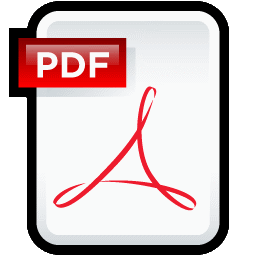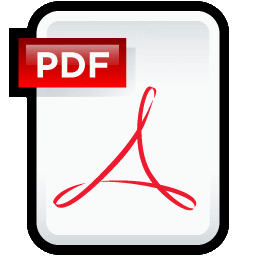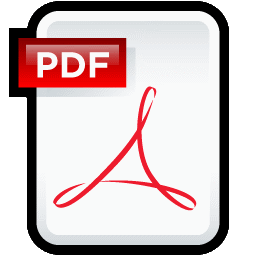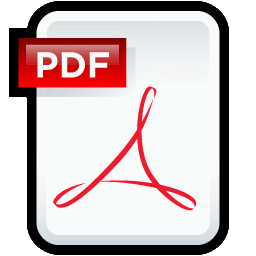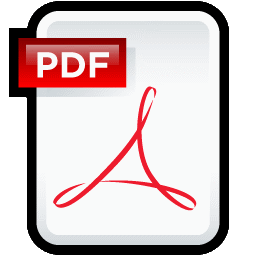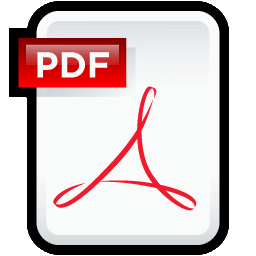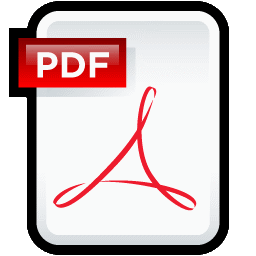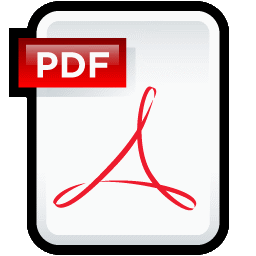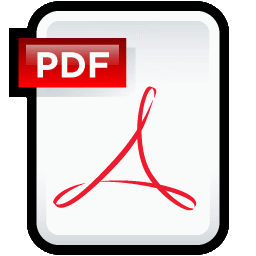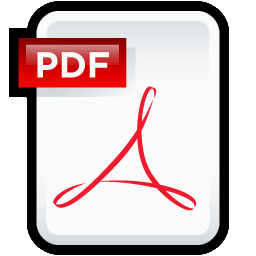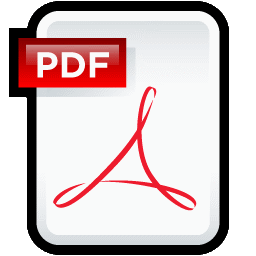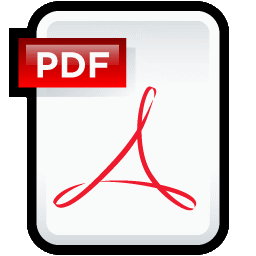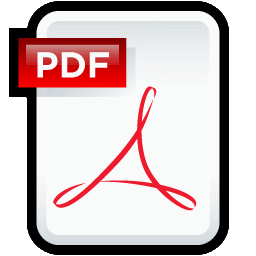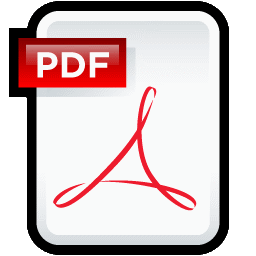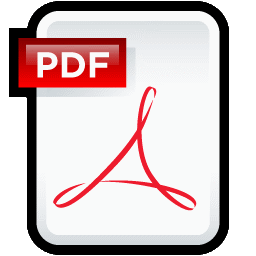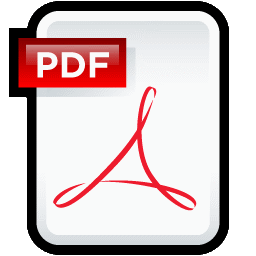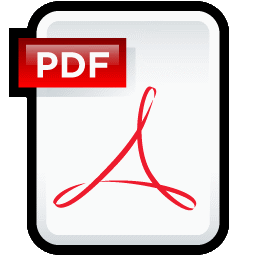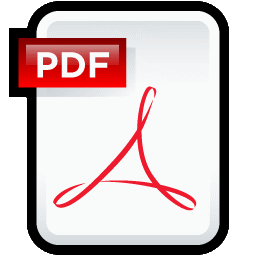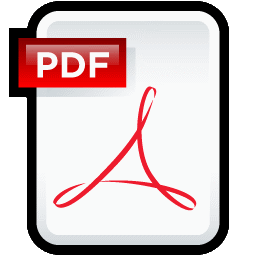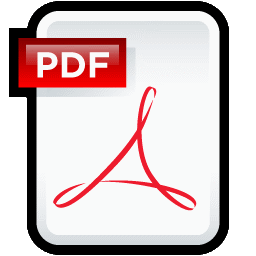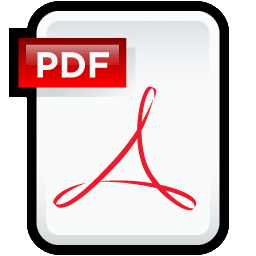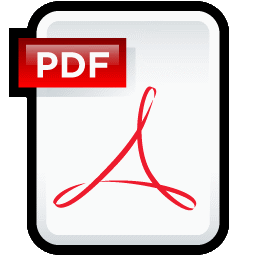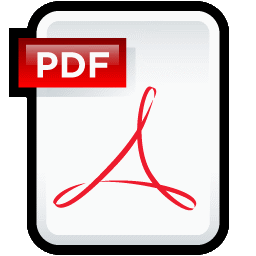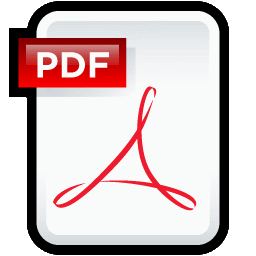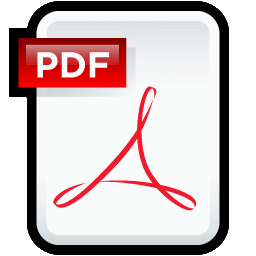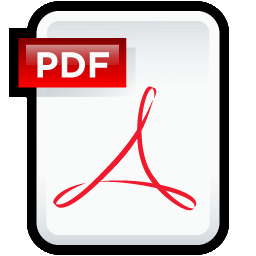FDA Blood Guidances
73 files
-
“Computer Crossmatch” (Computerized Analysis of the Compatibility between the Donor’s Cell Type and the Recipient’s Serum or Plasma Type)
By Cliff
Docket Number: FDA-2007-D-0019 Issued by: Center for Biologics Evaluation and Research "Computer crossmatch" is a process used to ensure that blood released for transfusion is compatible with the intended recipient.1 We, FDA, are issuing this guidance to assist you, blood establishments that perform compatibility testing using a computer crossmatch system to perform computerized matching of blood, consistent with current good manufacturing practice (CGMP) requirements in 21 CFR Parts 210, 211 and 606. Blood establishments must have standard operating procedures (SOPs) "to demonstrate incompatibility between the donor’s cell type and the recipient’s serum or plasma type" under the compatibility testing requirements in 21 CFR 606.151(c). This guidance describes practices that we believe satisfy the requirements in 21 CFR 606.151(c) to help ensure detection of an incompatible crossmatch when using a computerized system for matching a donor’s cell type with a recipient’s serum or plasma type.
0 downloads
(0 reviews)0 comments
Submitted
-
Additional Recommendations for Donor Screening With a Licensed Test for HIV-1 Antigen
By Cliff
Docket Number: FDA-2022-D-0499 Issued by: Center for Biologics Evaluation and Research On August 8, 1995, FDA issued a memorandum to all registered blood and plasma establishments entitled, "Recommendations for Donor Screening with a Licensed Test for HIV-1 Antigen". This memorandum supplements that memorandum and provides additional recommendations regarding storage of samples for HIV-1 antigen testing as well as clarifications of the previous recommendations regarding specific implementation issues.
0 downloads
(0 reviews)0 comments
Submitted
-
Additional Recommendations for Testing Whole Blood, Blood Components, Source Plasma and Source Leukocytes for Antibody to Hepatitis C Virus Encoded Antigen (Anti-HCV)
By Cliff
Docket Number: FDA-2022-D-0498 Issued by: Center for Biologics Evaluation and Research On April 23, 1992, August 5, 1993, and August 19, 1993, FDA issued memoranda to all registered blood and plasma establishments, which provided recommendations for testing for antibody to Hepatitis C Virus Encoded Antigen (anti-HCV). This memorandum supplements those previous memoranda by transmitting additional recommendations for testing for antibody to anti-HCV in blood establishments. (See attached recommendations.)
In a public meeting of the Blood Products Advisory Committee (BPAC) on March 21, 1996, after review and discussion of the relevant information available, concern was expressed that the use of a supplemental test for anti-HCV that uses fewer antigens than the screening test for anti-HCV may cause uncertainties. In particular, the Committee discussed its concern that the use of the Chiron RIBA HCV 2.0 Immunoblot Assay (SIA) as a supplemental test for anti-HCV should not be used for donor re-entry if the Ortho™ HCV Version 3.0 ELISA Test System was used as a screening test. FDA has considered the BPAC concerns and sets forth in the attached recommendations donor re-entry and counseling procedures that should be used in this situation.
0 downloads
(0 reviews)0 comments
Submitted
-
Adequate and Appropriate Donor Screening Tests for Hepatitis B; Hepatitis B Surface Antigen (HBsAg) Assays Used to Test Donors of Whole Blood and Blood Components, Including Source Plasma and Source Leukocytes
By Cliff
Docket Number: 2002D-0081 Issued by: Center for Biologics Evaluation and Research Blood establishments are required under 21 CFR 610.40(a)(3) and (b) to test donations of human blood and blood components for hepatitis B virus using approved screening tests that are adequate and appropriate for this purpose. One test used to detect the presence of hepatitis B infection is the hepatitis B surface antigen (HBsAg) test.
0 downloads
(0 reviews)0 comments
Submitted
-
Alternative Procedures for the Manufacture of Cold-Stored Platelets Intended for the Treatment of Active Bleeding when Conventional Platelets Are Not Available or Their Use Is Not Practical
By Cliff
Docket Number: FDA-2023-D-2034 Issued by: Center for Biologics Evaluation and Research FDA (we) is issuing this guidance to provide a notice of exceptions and alternatives to certain requirements in Title 21 of the Code of Federal Regulations (CFR) regarding blood and blood components. This notice is being issued under 21 CFR 640.120(b) to respond to a public health need and address the urgent and immediate need for platelets for the treatment of active bleeding when conventional platelets are not available, or their use is not practical. Maintaining platelet availability in the face of logistical challenges (e.g., in military, prehospital, or austere settings) or other threats to blood availability (e.g., mass casualty events or public health emergencies) is critical to assure that platelets are available to patients with active bleeding.
0 downloads
(0 reviews)0 comments
Submitted
-
An Acceptable Circular of Information for the Use of Human Blood and Blood Components
By Cliff
Docket Number: FDA-2002-D-0223 Issued by: Center for Biologics Evaluation and Research We, the Food and Drug Administration (FDA), Center for Biologics Evaluation and Research, are recognizing as acceptable for use by you, manufacturers of blood and blood components intended for transfusion, the document entitled “Circular of Information for the Use of Human Blood and Blood Components,” dated December 2021 (December 2021 Circular). The December 2021 Circular provides specific labeling instructions for the administration and use of blood and blood components intended for transfusion. We believe that the December 2021 Circular will assist you in complying with labeling requirements under 21 CFR 606.122. The requirements under 21 CFR 606.122 specify that a circular of information must be available for distribution with blood and blood components intended for transfusion. Section 606.122 further specifies the information that is required in the circular of information. This guidance supersedes the guidance of the same title updated December 2017
0 downloads
(0 reviews)0 comments
Submitted
-
Assessing Donor Suitability and Blood and Blood Product Safety in Cases of Known or Suspected West Nile Virus Infection
By Cliff
Docket Number: 2005D-0133 Issued by: Center for Biologics Evaluation and Research This guidance document finalizes the draft “Guidance for Industry: Assessing Donor Suitability and Blood and Blood Product Safety in Cases of Known or Suspected West Nile Virus Infection,” dated April 2005, and provides revisions to our previously published final guidance entitled “Guidance for Industry: Revised Recommendations for the Assessment of Donor Suitability and Blood and Blood Product Safety in Cases of Known or Suspected West Nile Virus Infection,” dated May 2003. We, FDA, recommend that these revised recommendations be applied prospectively, i.e., that actions taken under previous guidance do not need to be reconsidered subject to the additional provisions of this guidance. This guidance revises the final May 2003 West Nile Virus (WNV) guidance to add a recommendation to defer donors suspected of having WNV infection or diagnosed with WNV infection for 120 days after diagnosis or onset of illness, whichever is later.
0 downloads
(0 reviews)0 comments
Submitted
-
Availability of FDA’s eSubmitter Program for Regulatory Submissions from Licensed Blood Establishments
By Cliff
Docket Number: FDA-2011-D-0579 Issued by: Center for Biologics Evaluation and Research We, FDA, the Center for Biologics Evaluation and Research (CBER), are announcing to you, licensed blood establishments that collect Whole Blood and blood components, including Source Plasma, the availability of CBER’s eSubmitter Program (eSubmitter), an electronic submissions program. The eSubmitter program is intended to facilitate submission and processing of regulatory filings, including biologics license applications (BLAs), BLA supplements (BLSs), annual reports and amendments to pending eSubmitter applications and supplements. In this guidance, we describe how you may obtain and use the eSubmitter program.
0 downloads
(0 reviews)0 comments
Submitted
-
Bacterial Risk Control Strategies for Blood Collection Establishments and Transfusion Services to Enhance the Safety and Availability of Platelets for Transfusion
By Cliff
Docket Number: FDA-2014-D-1814 Issued by: Center for Biologics Evaluation and Research We, FDA, are issuing this guidance document to provide you, blood collection establishments and transfusion services, with recommendations to control the risk of bacterial contamination of room temperature stored platelets intended for transfusion. The recommendations in this guidance apply to all platelet products stored at room temperature in plasma or additive solutions, including platelets manufactured by automated methods (apheresis platelets), and Whole Blood derived (WBD) single and pooled (pre-storage and post-storage) platelets.
Additionally, this guidance provides licensed blood establishments with recommendations on how to report implementation of manufacturing and labeling changes under Title 21 of the Code of Federal Regulations (CFR) 601.12.
This guidance updates the final guidance of the same title dated September 2019. The September 2019 guidance finalized the draft guidance of the same title dated December 2018.
0 downloads
(0 reviews)0 comments
Submitted
-
Biological Product Deviation Reporting for Blood and Plasma Establishments
By Cliff
Docket Number: FDA-2001-D-0007 Issued by: Center for Biologics Evaluation and Research We, FDA, are providing you, a blood or plasma establishment, with revised recommendations related to biological product deviation (BPD) reporting. This guidance document is intended to assist blood and plasma establishments in determining when a report is required, who submits the report, what information to submit in the report, the timeframe for reporting, and how to submit the report. The revised guidance explains that we do not consider post donation information (PDI) events to require BPD reports.
0 downloads
(0 reviews)0 comments
Submitted
-
Blood Establishment Computer System Validation in the User's Facility
By Cliff
(This guidance finalizes the draft guidance entitled “Guidance for Industry: Blood Establishment Computer System Validation in the User’s Facility” dated October 2007) - 4/2013 Docket Number: FDA-2007-D-0069 Issued by: Center for Biologics Evaluation and Research We, FDA, are issuing this guidance to assist you, blood establishments, in developing a blood establishment computer system validation program, consistent with recognized principles of software validation, quality assurance, and current good software engineering practices. This guidance addresses a blood establishment's validation of its Blood Establishment Computer System (system) which incorporates Blood Establishment Computer Software (BECS). In the context of this guidance, the term user's facility means the blood establishment.
0 downloads
(0 reviews)0 comments
Submitted
-
Blood Pressure and Pulse Donor Eligibility Requirements – Compliance Policy
By Cliff
Docket Number: FDA-2002-D-0362 Issued by: Center for Biologics Evaluation and Research This guidance addresses the regulatory requirements for determining donor eligibility that apply to establishments that collect blood and blood components (blood establishments) for transfusion or for further manufacturing use, including Source Plasma. In the final rule dated May 22, 2015 (Requirements for Blood and Blood Components Intended for Transfusion or for Further Manufacturing Use (donor eligibility rule)) (Ref. 1), FDA (we) amended the regulations applicable to blood establishments for determining donor eligibility and testing blood and blood components. The revised requirements were implemented in order to assure the safety of the blood supply and to protect donor health. The donor eligibility rule became effective on May 23, 2016.
1 download
(0 reviews)0 comments
Submitted
-
Changes to an Approved Application: Biological Products" Human Blood and Blood Components Intended for Transfusion or for Further Manufacture
By Cliff
(This document finalizes the draft guidance of the same titled dated June 2013 and supersedes the guidance document of the same title dated July 2001.) - 12/2014
Docket Number: FDA-1999-D-3528 Issued by: Center for Biologics Evaluation and Research We, FDA, are providing you, manufacturers of licensed Whole Blood and blood components intended for transfusion or for further manufacture, including Source Plasma, with recommendations intended to assist you in determining which reporting mechanism is appropriate for submission of changes to an approved Biologics License Application (BLA) in accordance with the requirements under Title 21 of the Code of Federal Regulations (CFR) 601.12 (21 CFR 601.12), including recommendations in connection with the applicability and content of comparability protocols under 21 CFR 601.12(e) and labeling changes under 21 CFR 601.12(f).
0 downloads
(0 reviews)0 comments
Submitted
-
Collection of Platelets by Automated Methods
By Cliff
Docket Number: 2005D-0330 Issued by: Center for Biologics Evaluation and Research This guidance provides you, blood establishments, and FDA staff with revised recommendations for the collection of Platelets by automated methods (plateletpheresis). This guidance is intended to help you ensure donor safety and the safety, purity, and potency of Platelets collected by an automated blood cell separator device. For the purpose of this document, Platelets collected by automated methods and resuspended in plasma will be referred to by the product name "Platelets, Pheresis."
0 downloads
(0 reviews)0 comments
Submitted
-
Compliance Policy Regarding Blood and Blood Component Donation Suitability, Donor Eligibility and Source Plasma Quarantine Hold Requirements
By Cliff
Docket Number: FDA-2022-D-0588 Issued by: Center for Biologics Evaluation and Research This guidance addresses certain requirements that apply to blood establishments that collect blood and blood components, including Source Plasma. Specifically, the guidance explains the conditions under which FDA does not intend to take regulatory action for a blood establishment’s failure to comply with certain requirements in Title 21 of the Code of Federal Regulations 630.30 (21 CFR 630.30) regarding donation suitability; 21 CFR 630.10(c)(2) regarding donor eligibility; and 21 CFR 640.69(f) regarding quarantine hold for Source Plasma.
This guidance finalizes the draft guidance of the same title, dated May 2022, and supersedes the guidance entitled, “Alternative Procedures for Blood and Blood Components During the COVID-19 Public Health Emergency; Guidance for Industry,” dated April 2020.
1 download
(0 reviews)0 comments
Submitted
-
Considerations for the Development of Dried Plasma Products Intended for Transfusion
By Cliff
Docket Number: FDA-2018-D-3759 Issued by: Center for Biologics Evaluation and Research We, FDA, are providing recommendations intended to assist manufacturers, sponsors, and applicants developing dried plasma products intended for transfusion in order to facilitate the availability of safe and effective dried plasma products in the United States (U.S.). This guidance provides considerations for the successful development and licensing of dried plasma products and for the approval of devices used to manufacture dried plasma. The guidance includes recommendations on optimal sources of input plasma; manufacturing and product quality, including product characterization; packaging and reconstitution; clinical studies; and device submissions. This guidance finalizes the draft guidance of the same title dated October 2018.
0 downloads
(0 reviews)0 comments
Submitted
-
Content and Format of Chemistry, Manufacturing and Controls Information and Establishment Description Information for a Biological In Vitro Diagnostic Product
By Cliff
Docket Number: 98D-0964 Issued by: Center for Biologics Evaluation and Research In the Federal Register of July 8, 1997 (62 FR 36558), the Food and Drug Administration announced the availability of Revised Form FDA 356h Application to Market a New Drug, Biologic, or an Antibiotic for Human Use This document provides guidance on the content and format of information to be submitted to the Chemistry, Manufacturing, and Controls (CMC) section and Establishment Description section of a License Application for a biological in vitro diagnostic (IVD) product.
0 downloads
(0 reviews)0 comments
Submitted
-
Determining Donor Eligibility for Autologous Donors of Blood and Blood Components Intended Solely for Autologous Use - Compliance Policy
By Cliff
Docket Number: FDA-2016-D-2071 Issued by: Center for Biologics Evaluation and Research This guidance addresses the regulatory requirements for determining donor eligibility that apply to establishments that collect blood and blood components (blood establishments) intended solely for autologous use. On May 22, 2015, in order to better assure the safety of the nation’s blood supply and to help protect donor health, FDA finalized its revision of the applicable requirements for blood establishments to test donors for infectious disease, and to determine that donors are eligible to donate and that donations are suitable for transfusion or further manufacture (Requirements for Blood and Blood Components Intended for Transfusion or for Further Manufacturing Use, 80 FR 29842 (donor eligibility rule)1). The donor eligibility rule includes requirements related to current good manufacturing practice, donation testing, donor eligibility, and donation suitability (in 21 CFR Parts 606, 610, 630, and 640). It became effective on May 23, 2016.2
0 downloads
(0 reviews)0 comments
Submitted
-
Donor Deferral Due to Red Blood Cell Loss During Collection of Source Plasma by Automated Plasmapheresis
By Cliff
Docket Number: FDA-2022-D-0500 Issued by: Center for Biologics Evaluation and Research This memorandum addresses the temporary deferral of Source Plasma donors who have lost red blood cells due to technical difficulties during an automated plasmapheresis procedure.
0 downloads
(0 reviews)0 comments
Submitted
-
Donors of Blood and Blood Components: Notification of Donor Deferral, Small Entity Compliance Guide
By Cliff
Docket Number: FDA-1998-N-1016 Issued by: Center for Biologics Evaluation and Research The Food and Drug Administration (FDA) has prepared this guidance in accordance with section 212 of the Small Business Regulatory Enforcement Fairness Act of 1996 (Public Law 104-121). According to the Small Business Administration, a "small business" within the blood industry is an enterprise with $10 million in average annual receipts.1 This guidance is intended to help you, a small entity that collects blood or blood components for transfusion or for further manufacturing (blood or blood components), better understand and comply with the regulatory framework set forth in Title 21 Code of Federal Regulations 630.6 (21 CFR 630.6).
0 downloads
(0 reviews)0 comments
Submitted
-
Efficacy Studies to Support Marketing of Fibrin Sealant Products Manufactured for Commercial Use
By Cliff
Docket Number: 97D-0528 Issued by: Center for Biologics Evaluation and Research This document pertains to commercially-produced fibrin sealants composed of purified, virus-inactivated/removed human fibrinogen and human or bovine thrombin, with or without added components such as virus-inactivated/removed human factor XIII and/or aprotinin. A number of such products are currently available in Europe and Canada as hemostasis agents. Although manufacturers and clinicians in the United States have been actively engaged in the development and testing of fibrin sealants, only one fibrin sealant product has been licensed in this country. This document outlines the agency's current position with regard to clinical data used to support licensure of safe and effective commercially-produced fibrin sealants in the United States.
0 downloads
(0 reviews)0 comments
Submitted
-
FDA Recommendations Concerning Testing for Antibody to Hepatitis B Core Antigen (Anti-HBc)
By Cliff
Docket Number: FDA-2013-S-0613 Issued by: Center for Biologics Evaluation and Research The Food and Drug Administration (FDA) is now regulating as licensed biologic products test kits that detect total (IgG and IgM) antibody to hepatitis B core antigen (anti-HBc). After 31 March 1991 anti-HBc kits shipped in interstate commerce and labeled for use in screening blood and blood products must bear a U.S. license number.
1 download
(0 reviews)0 comments
Submitted
-
For the Submission of Chemistry, Manufacturing and Controls and Establishment Description Information for Human Plasma-Derived Biological Products, Animal Plasma or Serum-Derived Products
By Cliff
Docket Number: 98D-0007 Issued by: Center for Biologics Evaluation and Research In the Federal Register of July 8, 1997 (62 FR 36558), the Food and Drug Administration (FDA) announced the availability of the revised Form FDA 356h, Biologics License Application (BLA) entitled "Application to Market a New Drug, Biologic, or an Antibiotic for Human Use." This document provides guidance on the content and format of the Chemistry, Manufacturing and Controls (CMC) section and the Establishment
Description section of a Biologics License Application for a Human Plasma-Derived Biological Product, Animal Plasma or Serum-Derived Product. For these products, FDA is now implementing the BLA (revised Form FDA 356h) and will accept that application, instead of two separate license application submissions, the product license application (PLA) and the establishment license application (ELA).
0 downloads
(0 reviews)0 comments
Submitted
-
Further Testing of Donations that are Reactive on a Licensed Donor Screening Test for Antibodies to Hepatitis C Virus
By Cliff
Docket Number: FDA-2018-D-3197 Issued by: Center for Biologics Evaluation and Research We, the Food and Drug Administration (FDA), are providing you, blood establishments that collect Whole Blood and blood components, including Source Plasma, with recommendations for further testing of donations that are reactive on a licensed donor screening test for antibodies to hepatitis C virus (anti-HCV), as required under 21 CFR 610.40(e). We are also providing guidance to blood establishments on how to report the implementation of these recommendations.
0 downloads
(0 reviews)0 comments
Submitted
-
General Principles of Software Validation
By Cliff
Docket Number: FDA-1997-D-0029 Issued by: Center for Devices and Radiological Health Center for Biologics Evaluation and Research This guidance outlines general validation principles that the Food and Drug Administration (FDA) considers to be applicable to the validation of medical device software or the validation of software used to design, develop, or manufacture medical devices. This final guidance document, Version 2.0, supersedes the draft document, General Principles of Software Validation, Version 1.1, dated June 9, 1997.
0 downloads
(0 reviews)0 comments
Submitted
